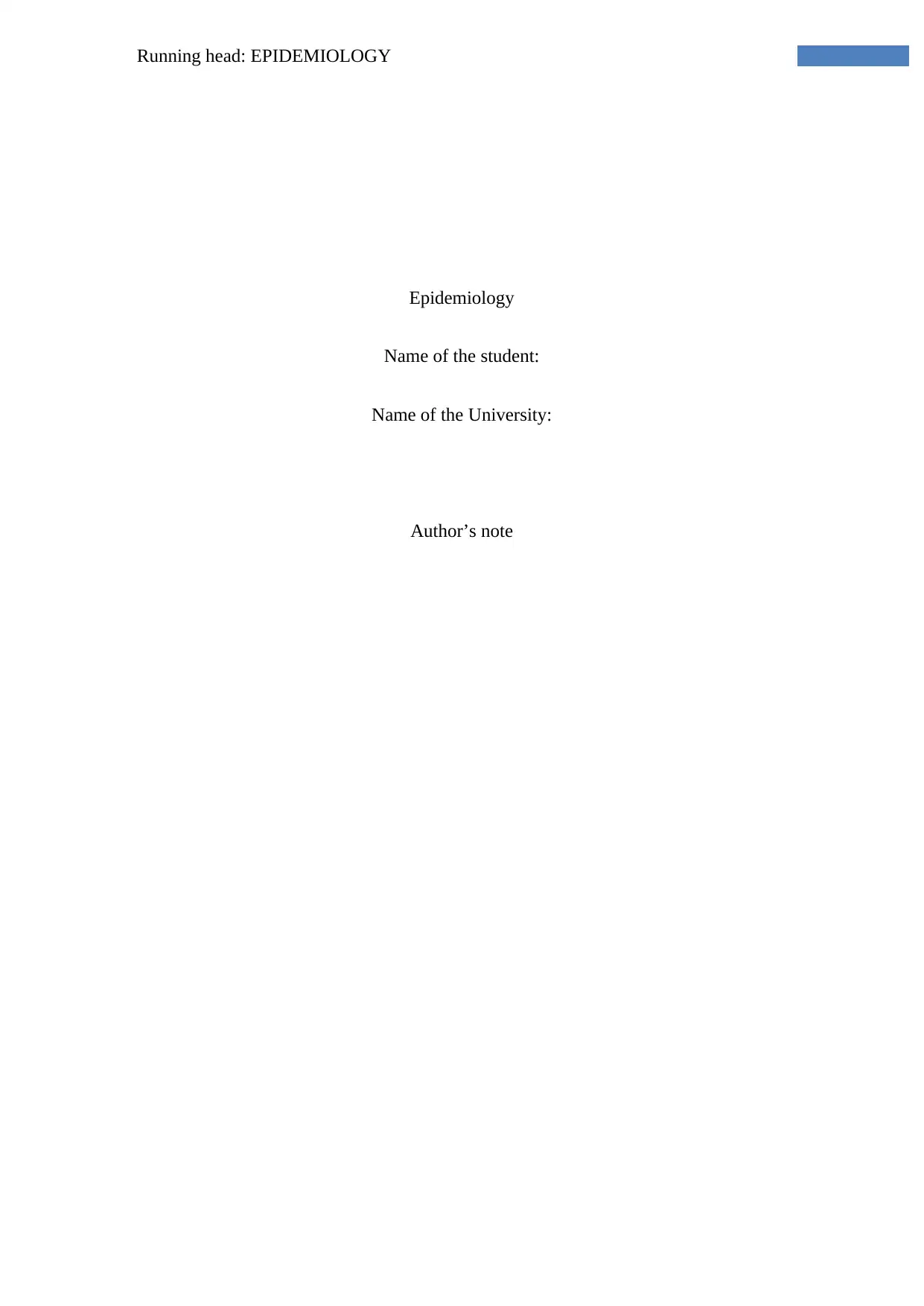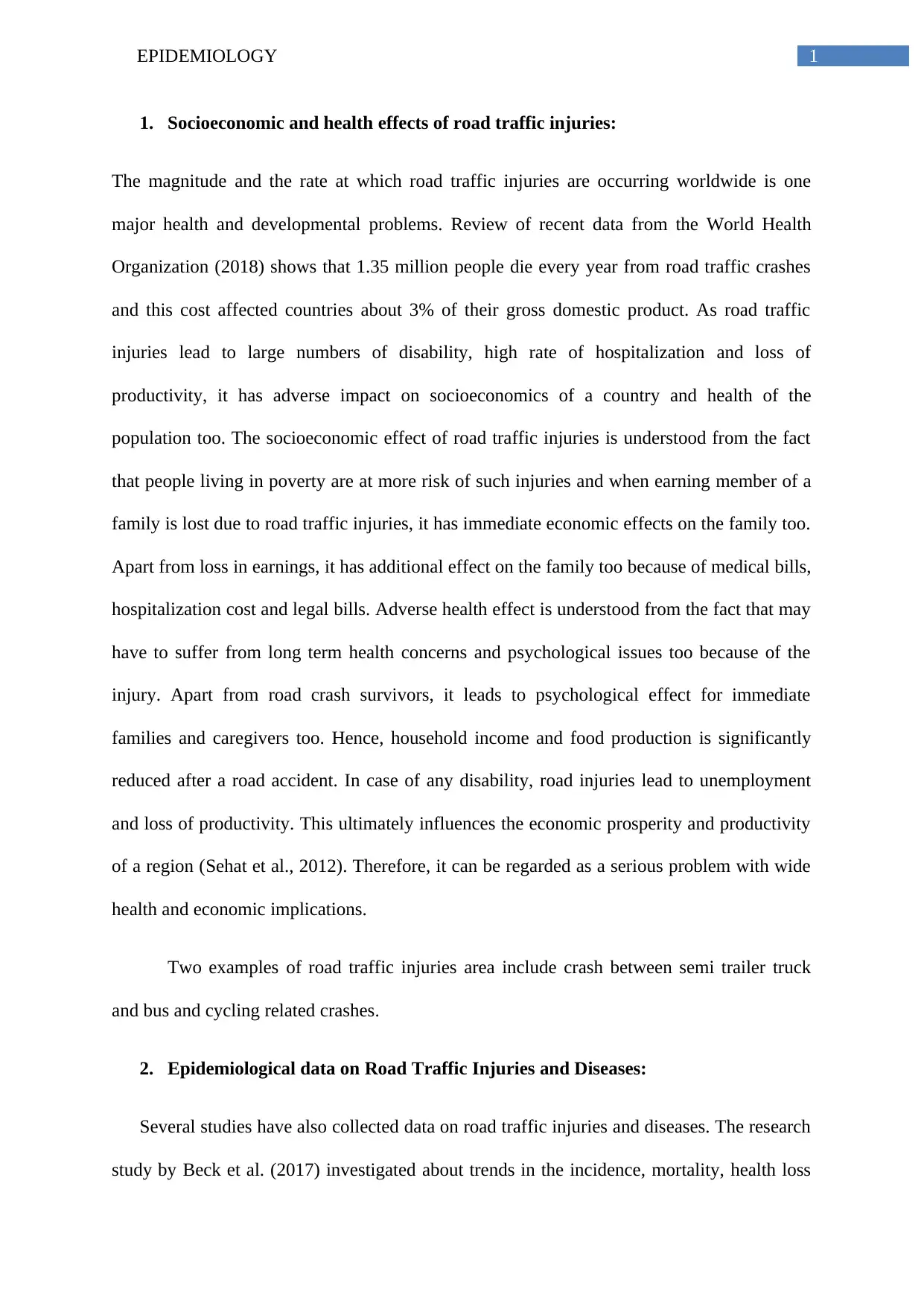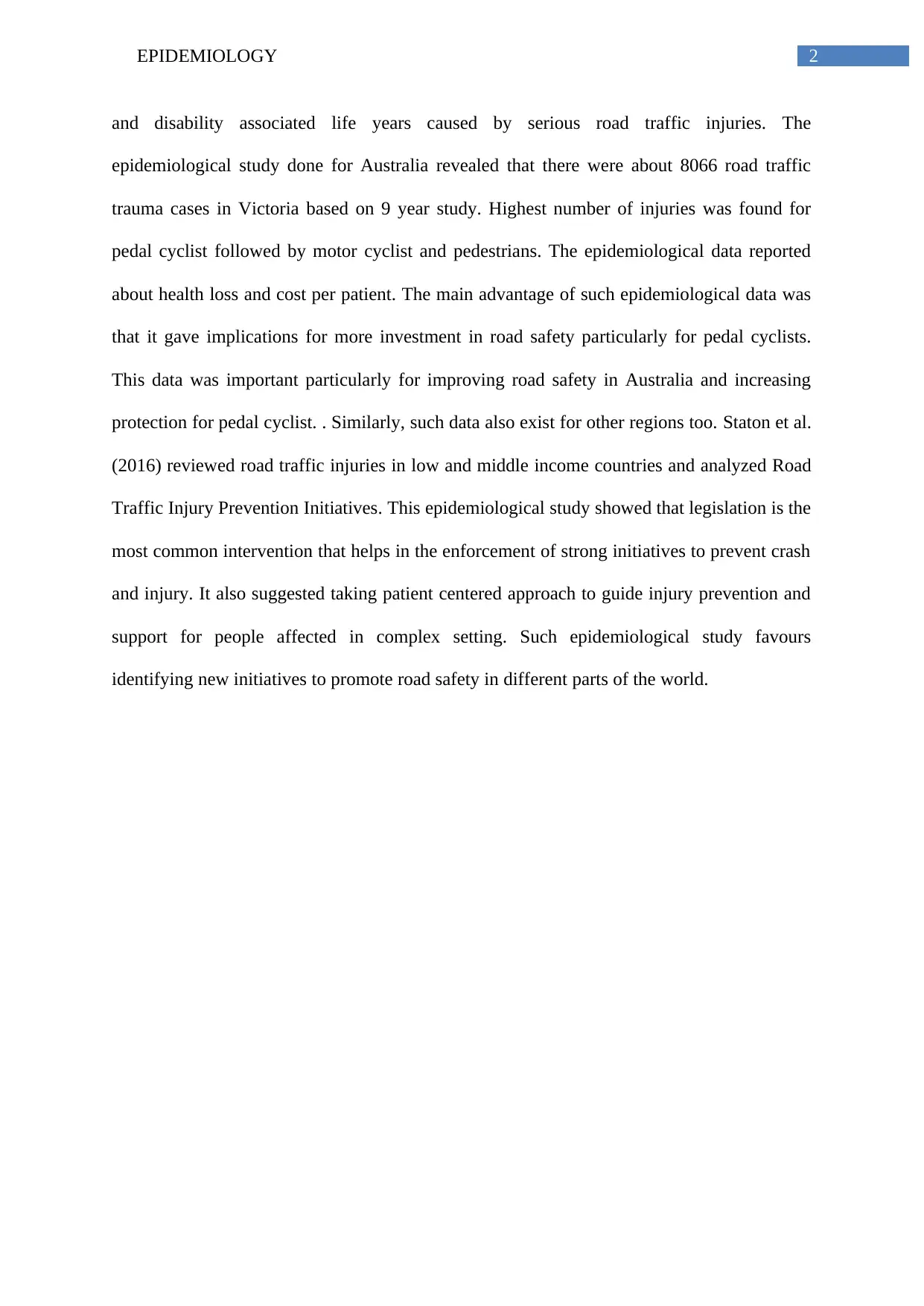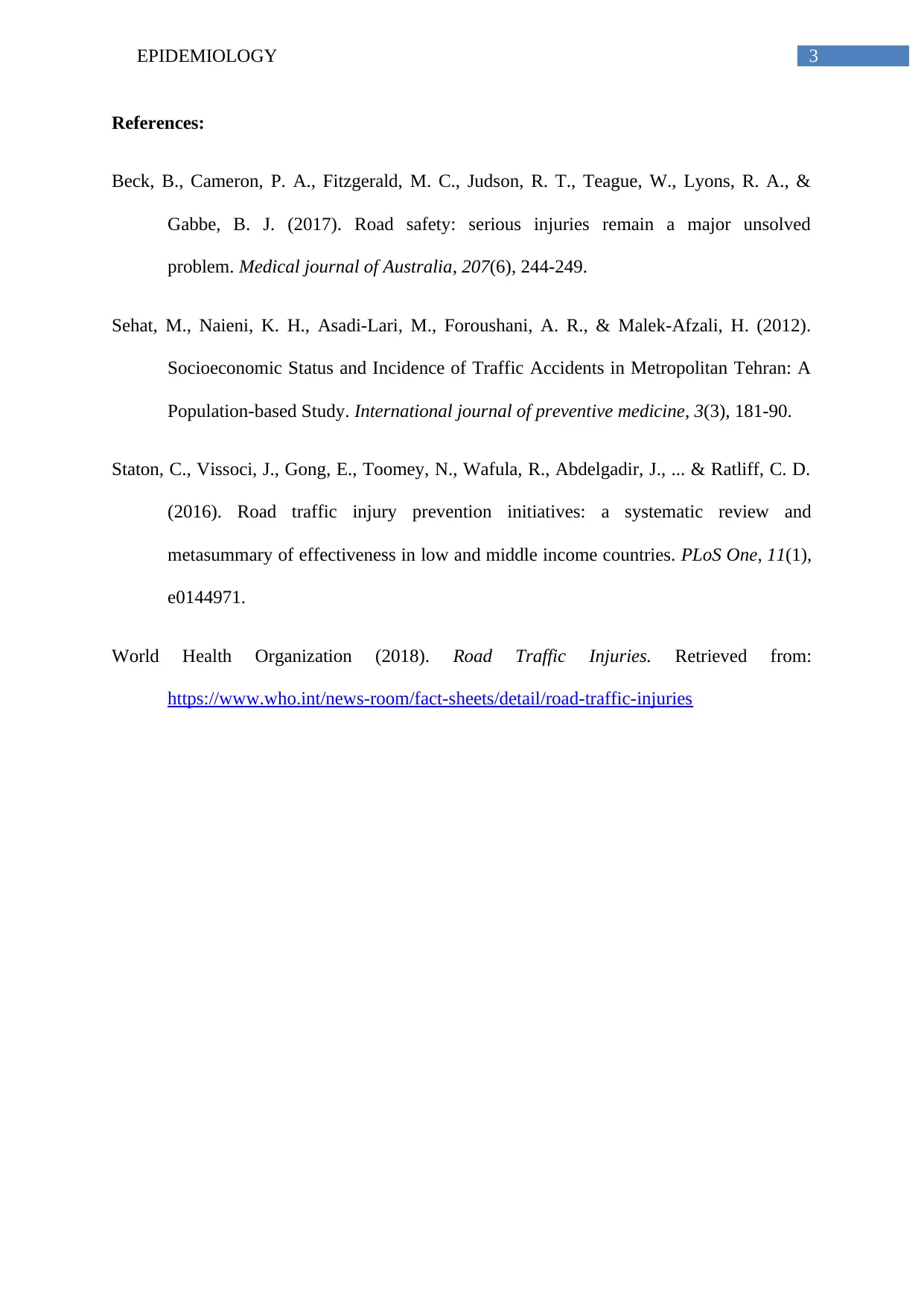PHC-313: Socioeconomic and Health Effects of Road Traffic Injuries
VerifiedAdded on 2023/04/24
|4
|786
|380
Essay
AI Summary
This essay examines the significant socioeconomic and health consequences of road traffic injuries (RTIs) worldwide, highlighting the substantial mortality rate of 1.35 million deaths annually and the associated economic burden of approximately 3% of affected countries' GDP. It emphasizes that RTIs disproportionately affect individuals in poverty, leading to immediate economic hardships for families due to lost income, medical expenses, and legal fees. The adverse health effects include long-term physical and psychological issues for both survivors and their caregivers. Epidemiological data from studies in Australia and low to middle-income countries reveal the prevalence of injuries among cyclists and the effectiveness of legislation in preventing RTIs. Patient-centered approaches and targeted road safety initiatives are crucial for mitigating the health and economic impacts of RTIs, making it a pressing global health and economic concern. Desklib provides a platform to explore such solved assignments and past papers.
1 out of 4






![[object Object]](/_next/static/media/star-bottom.7253800d.svg)